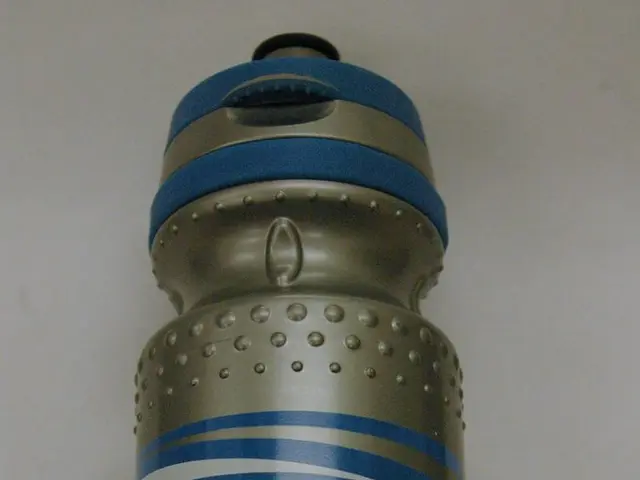Natural Methods to Restore a Ruptured Rotator Cuff
Healing a busted rotator cuff? Here's the lowdown on how to handle it the natural way. Keep in mind, this guide is here to provide some insight, but always listen to your body and seek professional advice before making any decisions.
Decoding Your Shoulder's Pain
Your rotator cuff, a group of muscles and tendons stabilizing your shoulder, can take a hit due to overuse, injury, or old age. You might notice:
- Nasty shoulder pain, especially during sleep
- Weak arm muscles
- Dreading lifting objects
- Clicking or popping noises during movement
Embracing Nature's Healing Power
Getting your shoulder back in shape is a mix of rest, exercises, diet, and lifestyle adjustments. Let's dive into some techniques to help ease the pain and improve your mobility.
1. Let Your Shoulder Chill
Avoid activities demanding repetitive overhead movements and heavy lifting. Modify activities to ease strain on your shoulder. If necessary, use a sling temporarily, but refrain from extended immobilization.
2. Cold and Hot Stuff
- Ice, baby!: Apply an ice pack for 15-20 minutes every 3-4 hours in the first few days to calm that inflammation.
- Heat Things Up: Once the initial inflammation subsides, heat packs will relax muscles and boost circulation.
3. Stretching and Subtle Strengthening
maintain regular movement to prevent stiffness, strengthen muscles, and improve shoulder stability. Begin with:
- Pendulum Swings: Lean forward, let your arm dangle and create small circular motions.
- Isometric Shoulder Exercises: Press your palm against a wall without moving your arm.
- Wall Crawls: Use your fingers to slowly "climb" a wall to stretch the shoulder.
As healing progresses, add resistance bands and strengthening exercises, but remember to get the all-clear from a pro first.
4. The Soothing Touch of a Pro
- Deep Tissue Massage: A licensed therapist can loosen those tight muscle knots and improve blood flow.
- Myofascial Release: Techniques like these will help break up the kinks in your muscles.
- Dry Needling or Acupuncture: These could provide pain relief and speed up healing.
5. Foodie First Aid
- Omega-3s: These bad boys are anti-inflammatory powerhouses, found in fish, flaxseeds, and walnuts.
- Vitamin C: Essential for collagen repair, found in citrus fruits, bell peppers, and leafy greens.
- Collagen and Protein: Bone broth, eggs, and other protein sources aid in tissue regeneration.
- Anti-Inflammatory Spices: Turmeric and ginger have natural pain-reducing properties.
6. Vitamin Supplements
Take the following supplements to enhance joint and muscle repair:
- Glucosamine & Chondroitin: Helps maintain joint health.
- Magnesium: Alleviates muscle tension and prevents spasms.
- Bromelain (from pineapple): Aids in reducing swelling.
- Vitamin D and Calcium: Strengthen bones and connective tissues.
7. Posture and Ergonomics
- Maintain a Solid Posture: Save your shoulder from strain by maintaining proper posture.
- Ergonomic Workspace: Set up your workspace to prevent further injury.
- Proper sleep position: Sleep on your back or unaffected side with a supportive pillow under your arm.
8. Mind and Body Relief
- Deep Breathing and Meditation: Reduces stress and tension.
- Yoga and Tai Chi: Improves flexibility and promotes gentle movement.
- Acupuncture: May provide pain relief and stimulate healing.
When to Consult a Doc
While natural healing can work wonders, make sure to consult a professional if:
- The pain just won't quit despite treatment.
- You experience muscle weakness or mobility loss in your arm.
- Signs of infection, such as swelling, redness, or warmth.
- Your tear is massive and didn't respond to conservative care.
Eye-Tooth Connection
Now, you might be wondering, "Which teeth are connected to the eyes?" The answer is none, my friend. Teeth and eyes are independent bodily structures. It's an interesting topic, though — maybe a different blog post in the future!
- Adapting a health-conscious lifestyle can aid in managing chronic diseases like chronic kidney disease, focusing on balanced nutrition, regular fitness and exercise, and therapies and treatments that promote overall wellness.
- An essential part of maintaining good health and preventing medical conditions, such as chronic-kidney-disease, is prioritizing a nutrient-rich diet, ensuring proper intake of omega-3s, vitamin C, collagen, protein, and anti-inflammatory spices.
- For those dealing with chronic kidney disease or other medical conditions requiring dietary restrictions, science provides alternative sources for essential nutrients, like plant-based protein options for those who cannot consume dairy, fish, or animal products.
- In addressing chronic diseases like chronic kidney disease, scientific research continues to uncover new therapies and treatments, such as stem cell treatments and targeted medications, for more effective disease management and ultimately, a cure.
- It's crucial to consult with healthcare professionals when considering changes to one's medical treatment plan, such as switching to a plant-based diet or incorporating new therapies and treatments for chronic diseases like chronic kidney disease, as they can offer expert guidance and ensure coordinated care.








